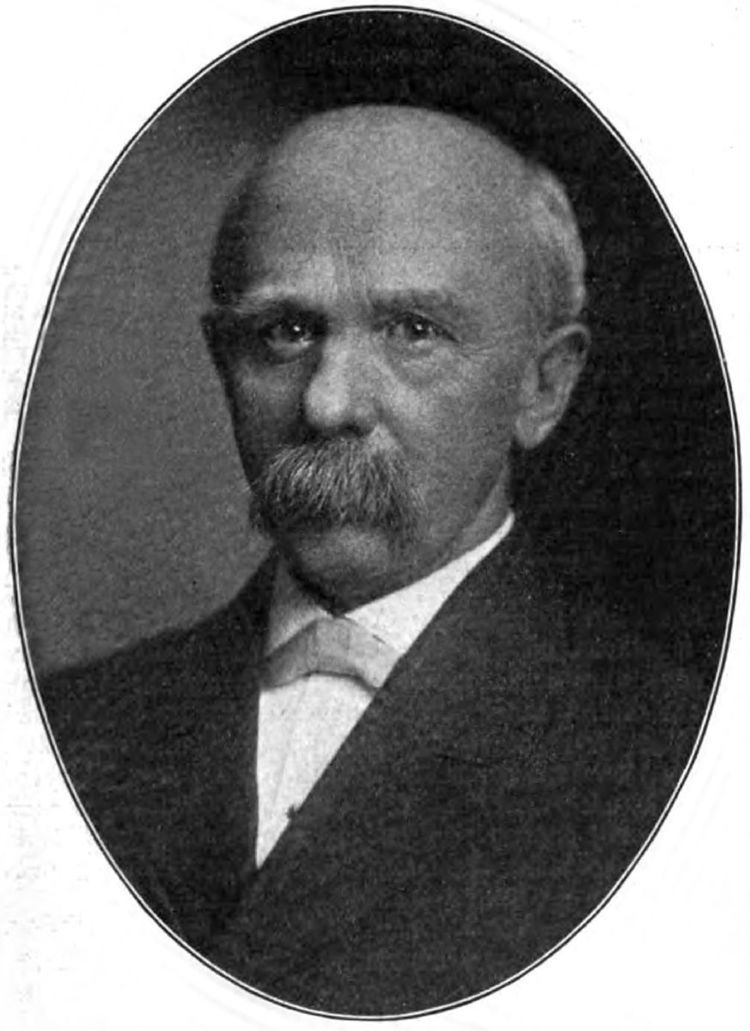Name John Sutcliffe | ||
 | ||
John B. Sutcliffe (March 28, 1853 – October 23, 1913) was an Anglo-American architect.
Contents
- United Kingdom
- New York and Alabama
- Illinois
- Arkansas
- Other churches
- Other buildings
- Family
- Publications
- References
United Kingdom
John Sutcliffe was born in Bacup, in the county of Lancashire, England, on March 28, 1853, the son of John and Martha (Townend) Sutcliffe. His paternal grandfather was a builder in Todmorden, Yorkshire. His paternal great-grandfather was a wool manufacturer; his maternal grandfather, John Townend, was a large colliery owner in Lancashire. John's father was a large contractor, who failed in business as a result of the depression brought about in that part of England by the American Civil War. He subsequently became an architect and civil engineer and in 1864, his son John left school to enter his father's business.
Sutcliffe attended evening classes at the Science and Art School for many years and, as a result of his work outside of business hours, he won the gold medal for architecture from the South Kensington Museum, where he graduated in architecture and art. He also won the bronze medal for descriptive geometry, and numerous other prizes and diplomas. From 1875-77, he was a draughtsman for Robert B. Dixon, of Darlington and from 1877–78, he worked for Osborne & Reading, Birmingham. From 1878-82, he was engaged as an architect at Bacup, and in 1878, he designed the buildings for a school in Crimsworth near Hebden Bridge. From 1882 to 1886, he was chief draughtsman in the British government's dockyard at Portsmouth.
New York and Alabama
In 1886, he emigrated to America, working first for J.A. Wood in New York City, and then on the staff of The American Architect in Boston, and in December moved to Birmingham, AL, where the following year he founded the Alabama Association of Architects. John Sutcliffe is mentioned in a civil lawsuit with which he was connected while working in Alabama, which was heard by the Supreme Court of Alabama in 1895, regarding an unpaid bill for architectural work of $29.05.
Illinois
In 1892 he moved to Chicago. About this time he began to specialize in Gothic design and church architecture, and in this speciality he found his true vocation. The finest examples of his churches in this part of the country are:
Sutcliffe was the official architect for the Episcopal Diocese of Springfield.
He was able to combine adherence to traditional Gothic with originality and life, so that his work had the naturalness and beauty of the best of the old English builders of the Middle Ages. In this respect—in their ability to escape from formalism—he and Ralph Adams Cram of New York were considered in a class by themselves in church design. Sutcliffe was a devout member of the Episcopal Church and designed many churches for the denomination. Oak Park has two examples of his work, Grace Church and St. Christopher’s.
Sutcliffe designed Christ Church, Chicago, c. 1908
Sutcliffe was a member of the Chicago Architects’ Business Association.
Arkansas
In 1897, Sutcliffe designed St John's Episcopal Church, Helena, AR, which was completed in 1899 but burned down in 1914. Sutcliffe was the Diocesan Architect for the Diocese of Arkansas.
Other churches
Other churches designed by Sutcliffe in the United States are:
Other buildings
In 1910, Sutcliff designed the Frances Donaldson Library at Nashotah House Theological Seminary in Wisconsin.
Family
On May 13, 1879, Sutcliffe married Lydia Sophia Knight of Saint Helier, Jersey.
Sutcliffe died at his home in Oak Park, on October 23, 1913. He was survived by his wife and five children, Arthur George, Helen Mary, Clara Mabel, Edwin Alan and Isabel Ray. His second son, Edwin, also became an architect. Funeral services were held at Grace Church. There was a requiem celebration of the Holy Communion.
Interment was at Oak Ridge Cemetery.
